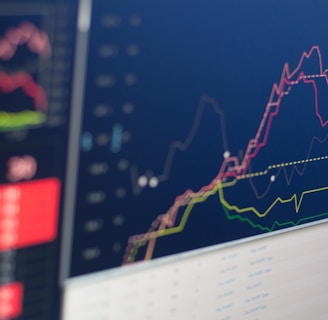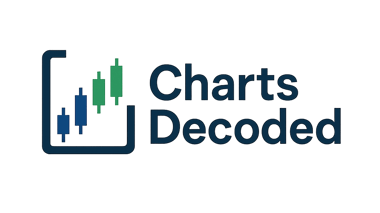Elevate Your Trading with Correlated Assets
Discover how to stop low-quality trades and develop a trading edge using correlated assets. Learn to trade with conviction and precision by understanding smart money strategies. Filter noise and stack the odds in your favor with our expert insights.
TRADING EDGE
Charts Decoded


How to Gain a Trading Edge Using Correlated Assets (Smart Money Style)
If you want to stop taking low-quality trades and start trading with conviction and precision, it’s time to develop a real trading edge—one that goes beyond indicators and into the mind of smart money.
One powerful way to elevate your game is by using correlated assets to confirm your trade setups. Whether you're trading EUR/USD with an eye on DXY, or watching Gold while tracking USD/JPY, using correlations helps you filter out noise and stack the odds in your favor.
Let’s break it all down.
📌 What Is a Trading Edge?
Your trading edge is what makes your strategy repeatable and profitable over time. It’s the combination of:
A specific entry model (like an order block or FVG)
A consistent risk management system
A higher-probability reason to enter or avoid a trade
The more confluence you have, the stronger your edge. That’s where correlated assets come into play.
🔗 Using Correlated Assets to Improve Your Strategy
Correlated assets move in tandem (positive correlation) or opposite directions (negative correlation). By analyzing these relationships, you can add confirmation or caution to your setups.
📊 Real-World Example:
Let’s say you trade EUR/USD using Smart Money Concepts. You see price trading into a bearish order block during the New York Killzone. Everything looks good.
But before pulling the trigger, you check DXY (US Dollar Index). If DXY is showing bullish structure, maybe even breaking above a FVG, that aligns perfectly—because EUR/USD and DXY are inversely correlated.
This gives you extra confidence that EUR/USD is likely to drop.
✅ Now your trade has more weight.
❌ If DXY is showing weakness, you might reconsider or reduce your position size.
💡 How Correlations Improve Trade Selection
Here’s what using correlated assets helps you do:
1. Filter Low-Probability Setups
Sometimes a trade looks good in isolation, but if its correlated asset is moving the opposite way, it might just be a trap.
2. Confirm Market Direction
Confluence between assets can validate your bias. If you’re long GBP/USD, you want to see DXY turning bearish or respecting a bearish OB/FVG.
3. Spot Better Timing
Even if your setup is clean, you might wait for DXY (or another pair) to show a shift in market structure before you enter. This can save you from entering too early.
🧠 Models You Can Use with Correlations
This method works with any SMC model, as long as you're consistent and clear with your rules. Examples:
Order Blocks – Key supply/demand zones that institutions use
Fair Value Gaps (FVGs) – Areas of imbalance price often returns to
Liquidity Sweeps – When price takes out highs/lows before reversing
Break of Structure (BOS) or CHoCH (Change of Character)
Just make sure you don’t use correlations as a substitute for strategy—they’re meant to support your entry model, not become the entry themselves.
🔄 Common Correlated Pairs to Watch
Pair/AssetCorrelates WithTypeEUR/USDDXYInverseGBP/USDDXYInverseXAU/USDUSD/JPY or DXYInverseAUD/USDDXY, SPXInverseUSD/CADOil (WTI)InverseNZD/USDAUD/USDPositive
🧭 Putting It All Together: Build Your Trading Edge
Here’s a simple process to use:
Identify your trade setup based on your chosen model (OB, FVG, etc.)
Check the correlated asset to confirm direction or momentum
Look for confluence in Killzones (timing matters!)
Execute only when your setup aligns with the correlated asset’s structure
Journal everything – your edge gets stronger with data
🚀 Final Thoughts
Using correlated assets is like having a second set of eyes on the market. It doesn’t replace your strategy—it enhances it. When your trade setup and the correlated asset are aligned, you're no longer guessing—you’re trading with confidence and understanding.
If you're serious about building a professional edge, stop trading in isolation. Start using correlations to your advantage, and you'll instantly see the difference in the quality of trades you take.
Want more Smart Money tips and trade breakdowns?
Subscribe to the Charts Decoded newletter!
Subscribe to our newsletter
Enjoy exclusive special deals available only to our subscribers.
